All products featured are independently chosen by us. However, SoundGuys may receive a commission on orders placed through its retail links. See our ethics statement.
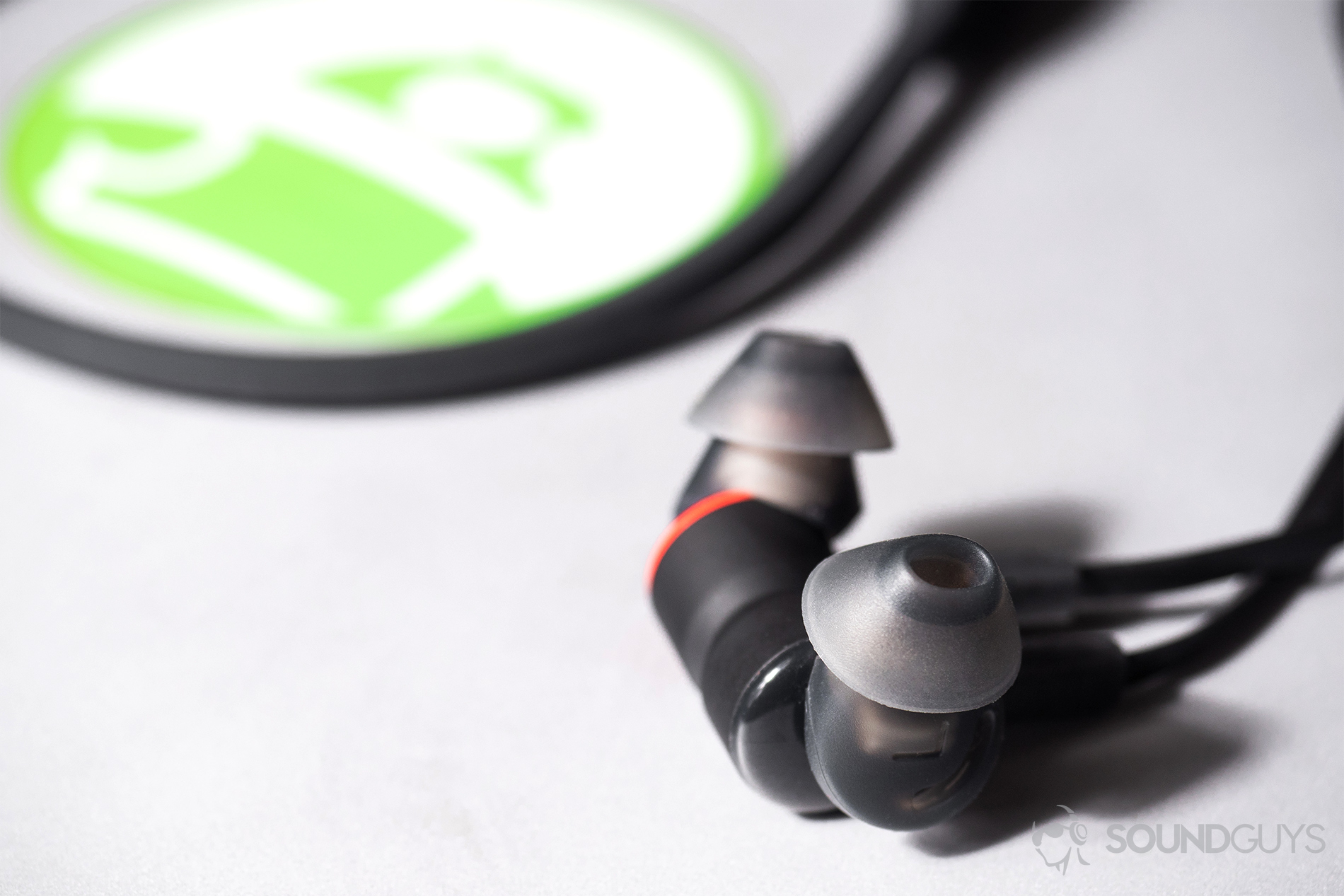
Plantronics BackBeat Go 410 review
March 26, 2021
Plantronics BackBeat GO 410
While headphones and earbuds develop more niche categories, some of us just want a solid pair of affordable earbuds for daily use. Well, enter the Plantronics BackBeat GO 410. These earbuds retail for well under $100 USD and boast effective noise canceling, an ergonomic fit, and reliable connectivity. For those dubious about the neckband design, doubt no more, for the neckband found here is comfortable and flexible.
Editor’s note: this list was updated on March 26, 2021, to include a contents menu, add context to the sound quality section, and add technical information.
Who should get the Plantronics BackBeat GO 410?

- Commuters will appreciate the active noise canceling (ANC) performance, which effectively cancels out low-frequency sounds like a rumbling train engine.
- Frequent flyers will also want to use these earbuds for their ANC capabilities and portable design. The pliable neckband lends itself nicely to a one-bag lifestyle. If you must conserve the most amount of space, you can just wear them around your neck. and if the battery dies, you can use the convertible USB charging cable for wired listening.
- Anyone can enjoy the Plantronics BackBeat GO 410 because they’re sweat-resistant and feature comfortable ear tips.
How is the Plantronics BackBeat GO 410 built?
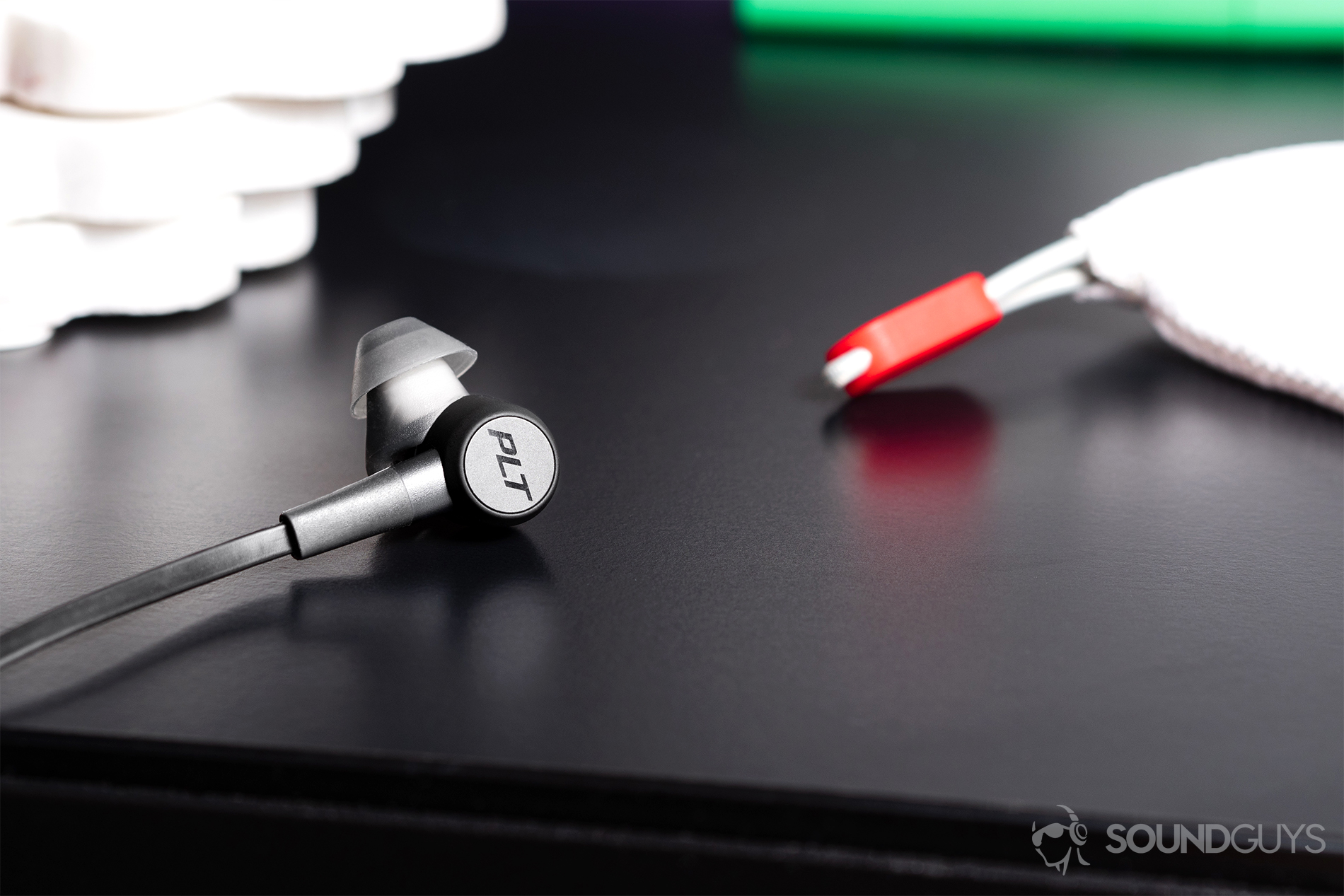
A combination of plastic and rubberized silicone makes up the neckband earbud design. Much like the Beats Powerbeats and OnePlus Bullets Wireless 2, the soft-touch neckband is bendy and easy to forget when wearing it. Oblong plastic housings contain the 180mAh battery and Bluetooth components.
The cable is broken up by an integrated three-button remote which hosts a slew of controls. You can hold the plus and multifunction buttons for two seconds to toggle ANC on or off. When you connect the earbuds, the headset automatically disconnects from your Bluetooth device to conserve battery.
Start here: Ultimate headphone buying guide
The right earbud is easy to identify from the left due to its poppy red paint job, which is a neat design. One of the more novel features of the Plantronics BackBeat GO 410 is its convertible USB cable, which can both charge the earbuds and allow for wired listening if the battery dies. True, it looks like some kind of monstrous dongle-headphone jack device, but it works in a pinch.
Sweat-resistant but not the best for exercise
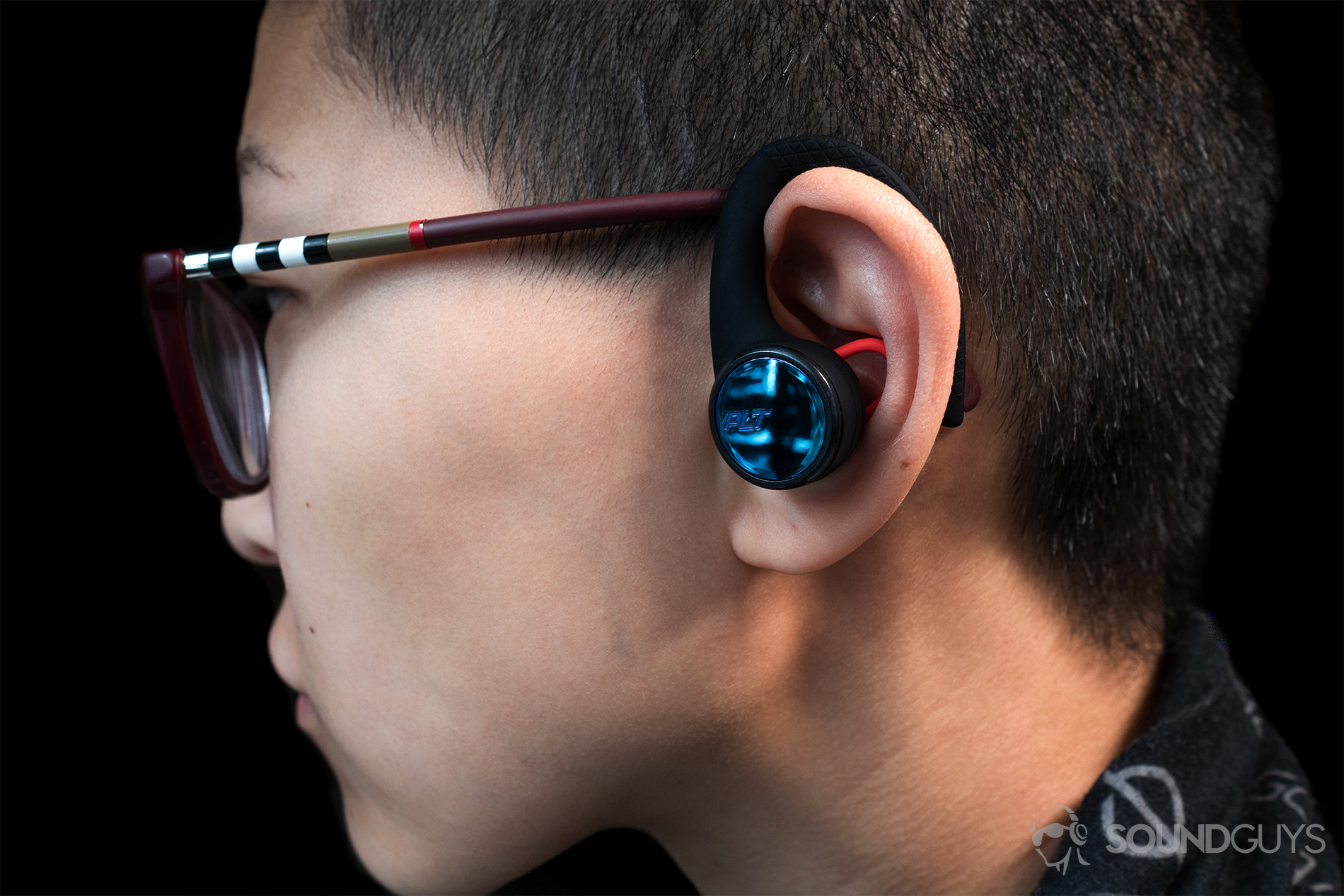
Although the Plantronics BackBeat GO 410 is sweat-resistant, it hasn’t received an official IP rating like the BackBeat FIT 3100. Additionally, the neckband design isn’t the best for vigorous workouts. When running, it bobs up and down relentlessly and when weight-lifting, the neckband slides down my back during a bench press. It is appreciated, however, that the buttons are easy to distinguish and that listeners can access their virtual assistants via the center button.
Related: Best running earbuds
Is the noise canceling any good?
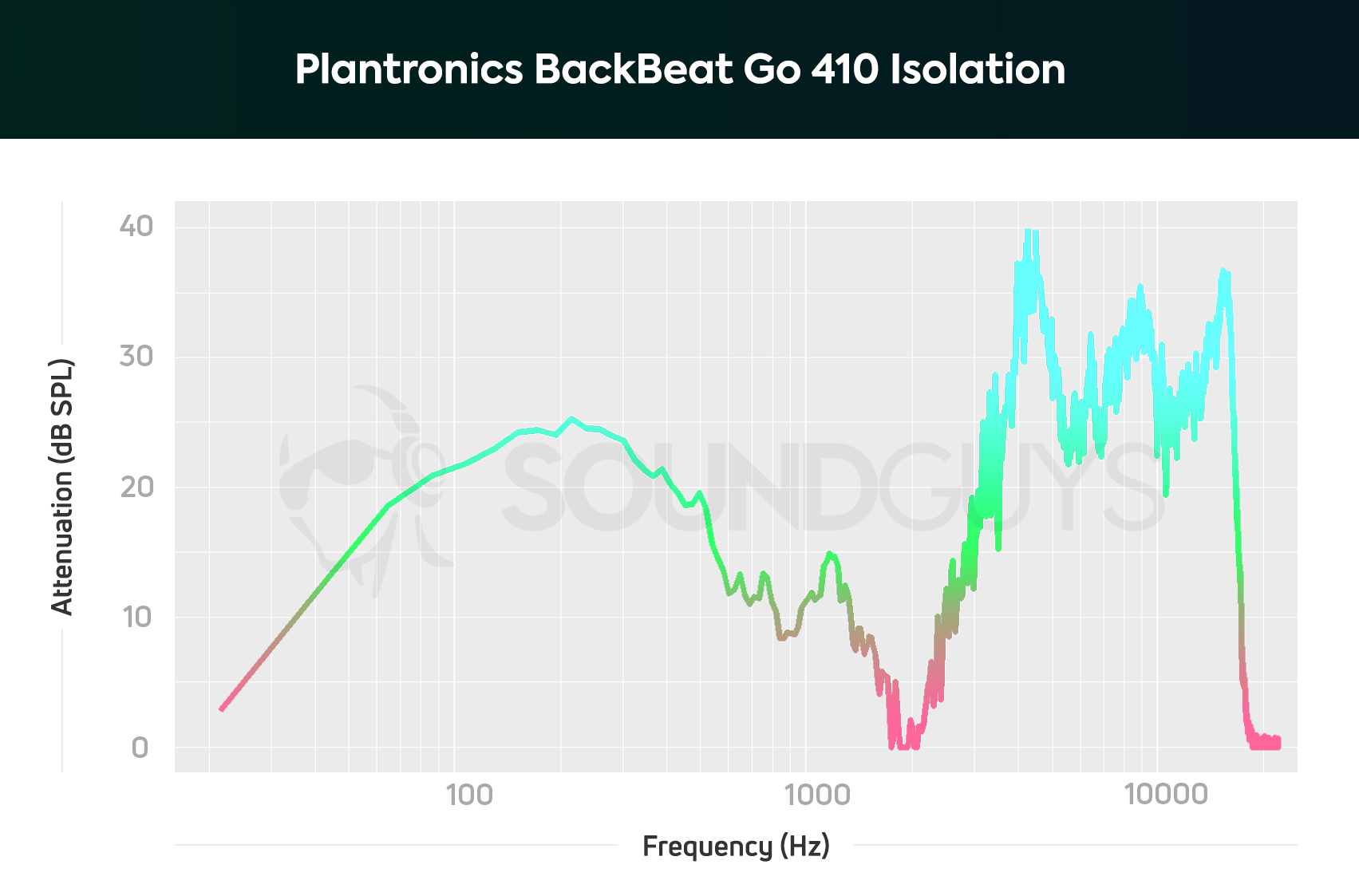
Listeners can alternate between high and low noise canceling modes depending on the environment. You can download the BackBeat FIT app to enable automatic ANC adjustment, which switches from high to low settings depending on the noise of your environment. Noise canceling can prevent noise-induced hearing loss: the attenuated background noise is less likely to cause auditory masking; plus, the passive isolation isn’t too shabby either.
How long does the battery last?
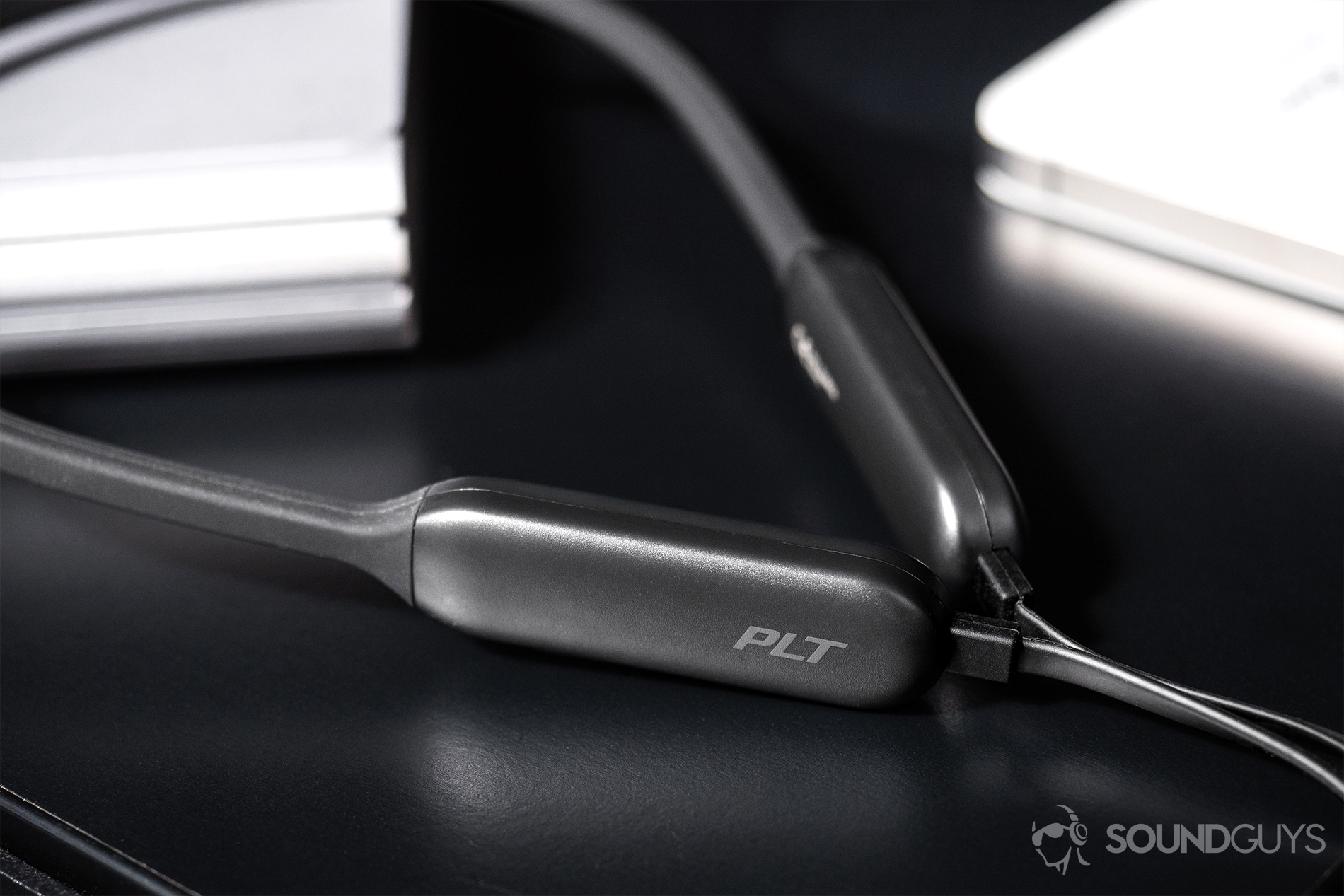
With the noise canceling turned on, our objective testing resulted in 7 hours, 53 minutes of constant playback from the Plantronics BackBeat GO 410. This is impressive given that Plantronics’ posited battery life is eight hours. While our results seem a tad short from the company’s, we subject all wireless earbuds and headphones to a constant 75dB(SPL) output, which is louder than most will consistently listen to.
These earbuds seem battery-oriented seeing as they enter DeepSleep mode after 90 minutes of inactivity to conserve energy. What’s more, listeners will be able to squeeze 10 hours of playback without active noise canceling turned on and 50 hours of battery life with just noise canceling turned on sans media playback.
How do you connect the BackBeat GO 410 to your phone?
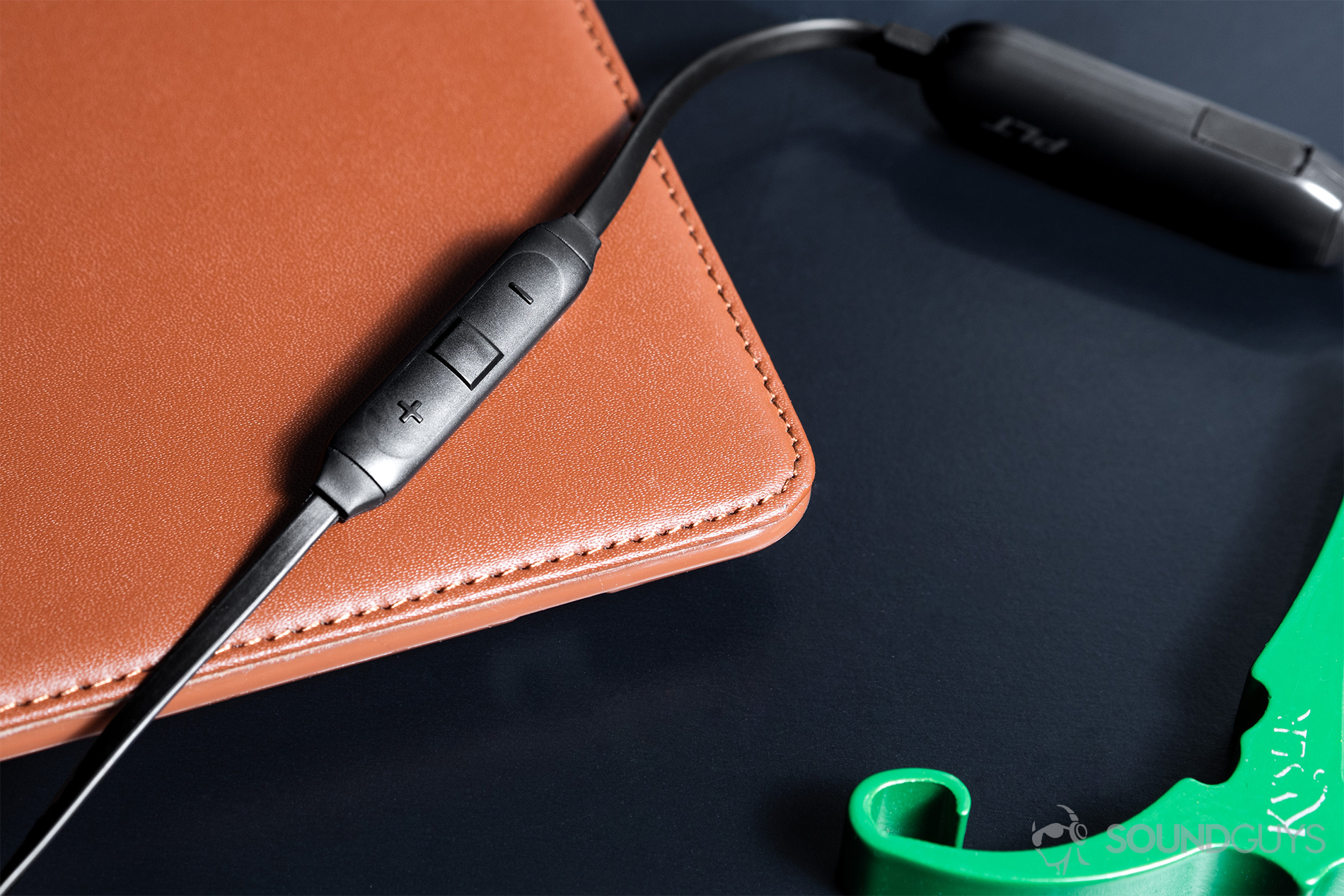
The headset uses Class 1 Bluetooth 5.0 and has an impressive 30-meter range. Generally speaking, connectivity is reliable, but there are some hiccups every now and then, especially when walls come between the headset and source device.
Bluetooth codec options are sparse with just SBC available. This means that video streaming lags a twinge and wireless audio quality isn’t optimal, regardless of if you’re listening via iPhone or Android. On the flip side, the earbuds support Bluetooth multipoint, so you can connect two devices simultaneously.
How do the Plantronics BackBeat GO 410 sound?
This has a textbook consumer-friendly sound signature: sub-bass, upper-midrange, and treble notes are all emphasized. This kind of frequency response is far from accurate but the amplified high notes counteract the amplified bass notes.
Lows, mids, and highs
The star of Julia Nunes’ poppy song Make Out, is Nunes’ ukulele, which remains a constant presence throughout the melody. Although the harmonic resonance of the ukulele strumming is slightly emphasized, it’s masked during the choruses when the kick drum enters full force. Additionally, Nunes’ lower register is occasionally lost to the commotion; this is most obvious during the bridge at 1:56.
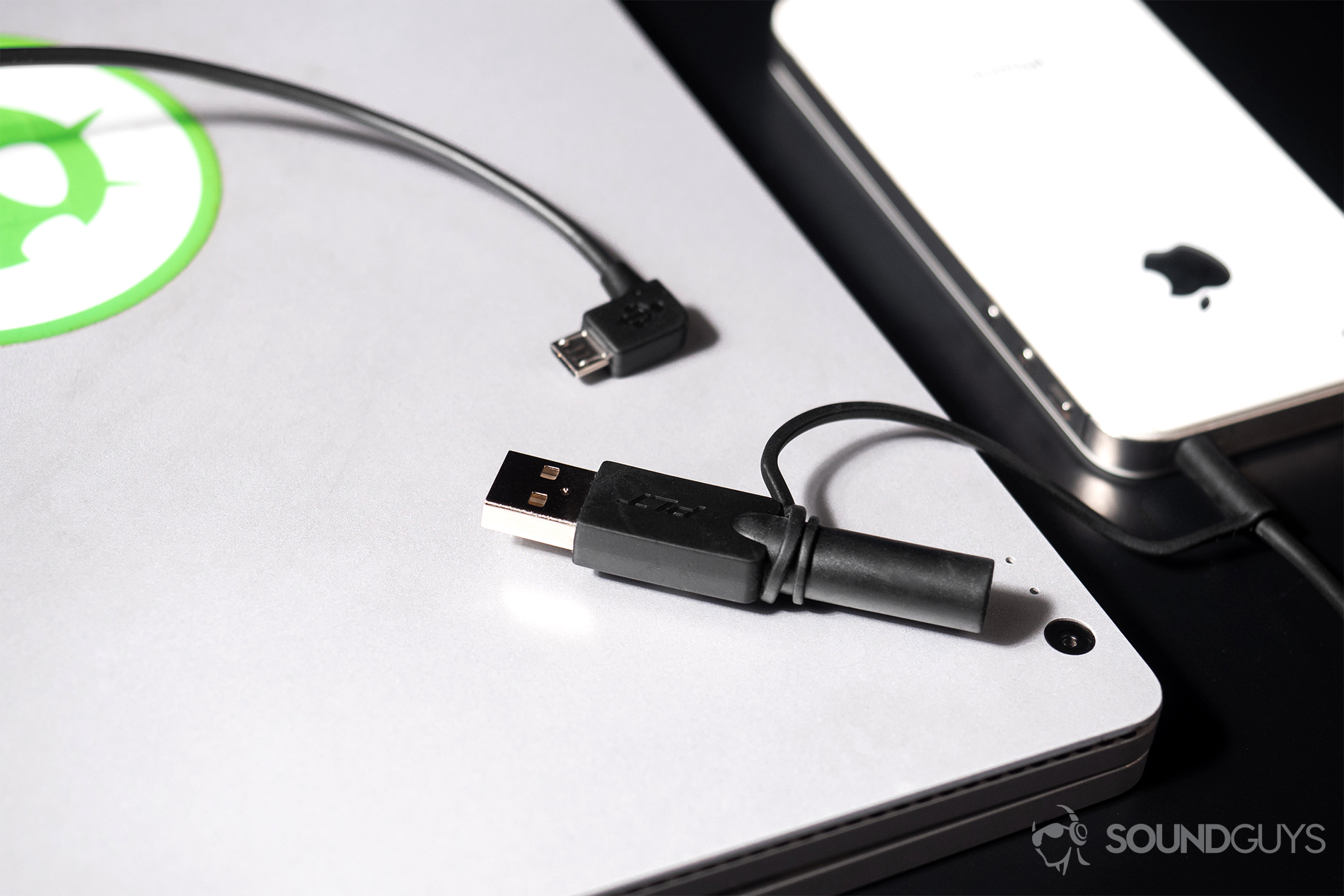
The Yeah Yeah Yeahs’ early-aughts hit song Maps leads with a D chord played from the electric guitar. While the chord’s resonance is distorted, it isn’t so off base that it’s fatiguing. Any potential for auditory fatigue disappears once the drum kicks in at 0:15 and masks the high-frequency reverberations.
Can you use the Plantronics BackBeat GO 410 for phone calls?
The microphone works well enough, but can’t compare to our favorite headsets for conference calls. It does an all right job minimizing background noise and parlaying the speaker’s voice. For Plantronics, though, a brand that typically excels in this area, it’s nothing to write home about. Additionally, the placement makes it easy to inadvertently rub the microphone against a jacket collar mid-conversation, causing the person on the other line to bust an eardrum.
Should you buy the Plantronics BackBeat GO 410?
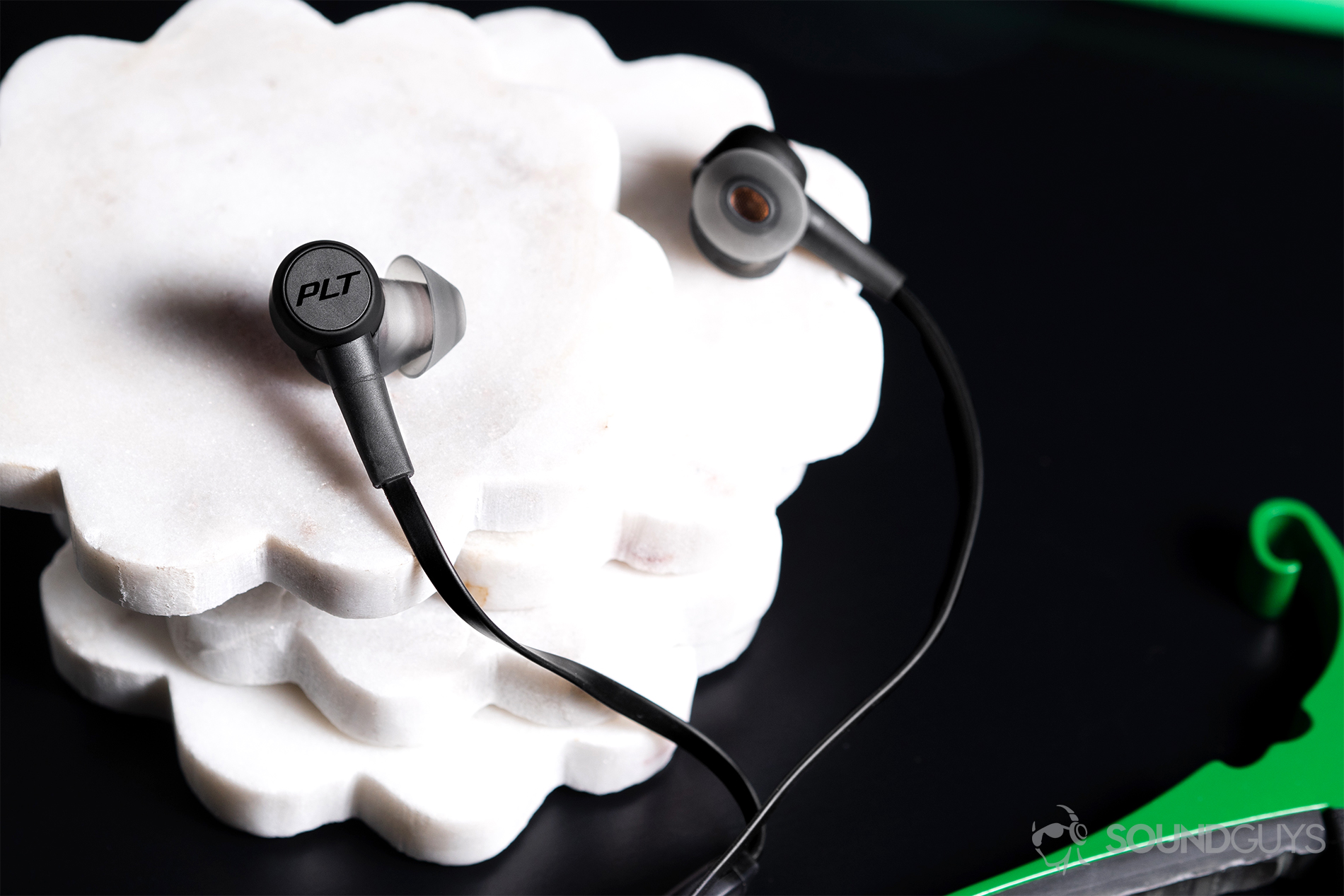
These Plantronics BackBeat GO 410 can be had for around $70 USD, making them a great deal for listeners who don’t mind some outdated hardware.
The noise canceling performance is quite good, making the BackBeat GO 410 an earnest contender in the budget noise canceling domain. Although the audio quality isn’t going to impress self-proclaimed audiophiles, that’s fine. These aren’t intended for studio use. Instead, the earbuds are meant to be versatile, comfortable, and practical, all of which they are.
Up next: Best noise-canceling headphones
What should you get instead?
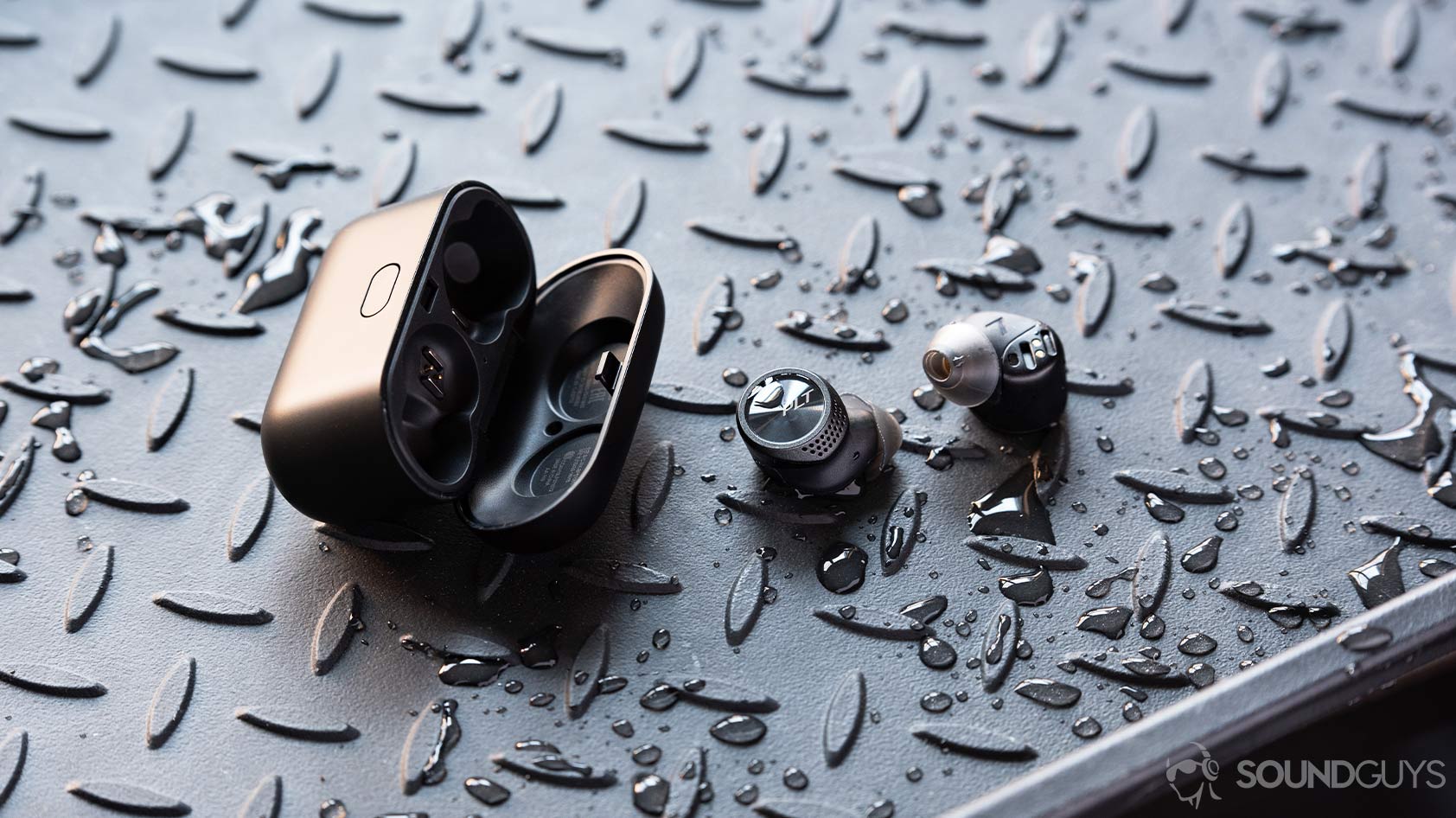
Plantronics has plenty of more modern offerings. If you’re ready to make the jump to truly wireless earbuds, we recommend the Plantronics BackBeat PRO 5100. Like the BackBeat GO 410, the PRO 5100 unfortunately use a microUSB input for charging, but they include premium features like voice alerts and a dust and water-resistant design.
Perhaps you’re not yet ready to jump ship from wires completely, that’s okay! The OnePlus Bullets Wireless Z is a great option that retails for as low as $29 USD, if you find it on promotion. These earphones boast up to 20 hours of battery life on a single charge, and 10 minutes of charge yields 10 hours of playback. OnePlus also uses magnetic housings for its IP55-rated buds. You can read all about them from our sister site Android Authority.